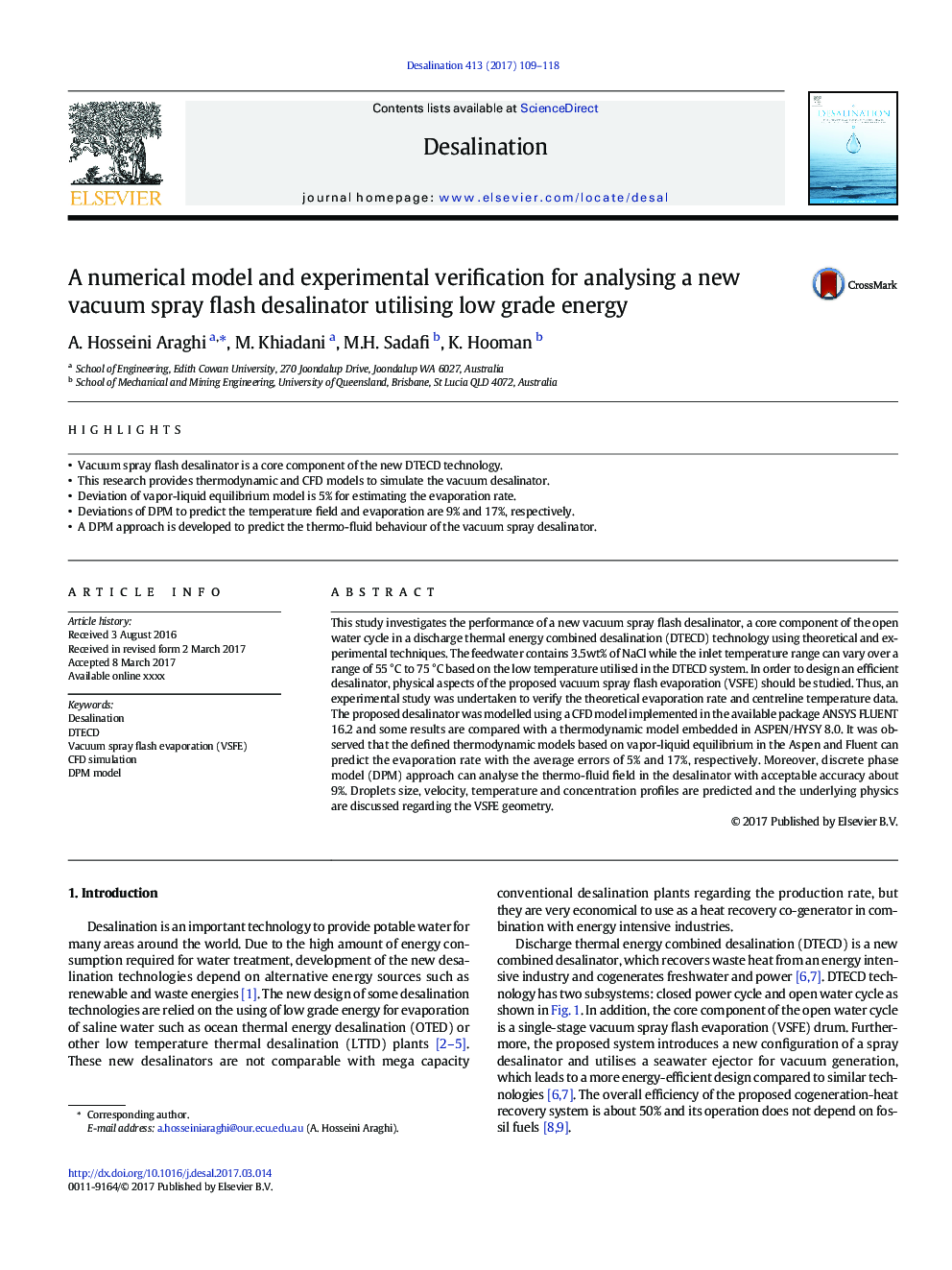| کد مقاله | کد نشریه | سال انتشار | مقاله انگلیسی | نسخه تمام متن |
|---|---|---|---|---|
| 4987778 | 1455282 | 2017 | 10 صفحه PDF | دانلود رایگان |
عنوان انگلیسی مقاله ISI
A numerical model and experimental verification for analysing a new vacuum spray flash desalinator utilising low grade energy
ترجمه فارسی عنوان
یک مدل عددی و تأیید آزمایشی برای تجزیه و تحلیل اسپری خلاء اسپاسم جدید با استفاده از انرژی کم انرژی
دانلود مقاله + سفارش ترجمه
دانلود مقاله ISI انگلیسی
رایگان برای ایرانیان
موضوعات مرتبط
مهندسی و علوم پایه
مهندسی شیمی
تصفیه و جداسازی
چکیده انگلیسی
This study investigates the performance of a new vacuum spray flash desalinator, a core component of the open water cycle in a discharge thermal energy combined desalination (DTECD) technology using theoretical and experimental techniques. The feedwater contains 3.5wt% of NaCl while the inlet temperature range can vary over a range of 55 °C to 75 °C based on the low temperature utilised in the DTECD system. In order to design an efficient desalinator, physical aspects of the proposed vacuum spray flash evaporation (VSFE) should be studied. Thus, an experimental study was undertaken to verify the theoretical evaporation rate and centreline temperature data. The proposed desalinator was modelled using a CFD model implemented in the available package ANSYS FLUENT 16.2 and some results are compared with a thermodynamic model embedded in ASPEN/HYSY 8.0. It was observed that the defined thermodynamic models based on vapor-liquid equilibrium in the Aspen and Fluent can predict the evaporation rate with the average errors of 5% and 17%, respectively. Moreover, discrete phase model (DPM) approach can analyse the thermo-fluid field in the desalinator with acceptable accuracy about 9%. Droplets size, velocity, temperature and concentration profiles are predicted and the underlying physics are discussed regarding the VSFE geometry.
ناشر
Database: Elsevier - ScienceDirect (ساینس دایرکت)
Journal: Desalination - Volume 413, 1 July 2017, Pages 109-118
Journal: Desalination - Volume 413, 1 July 2017, Pages 109-118
نویسندگان
A. Hosseini Araghi, M. Khiadani, M.H. Sadafi, K. Hooman,
